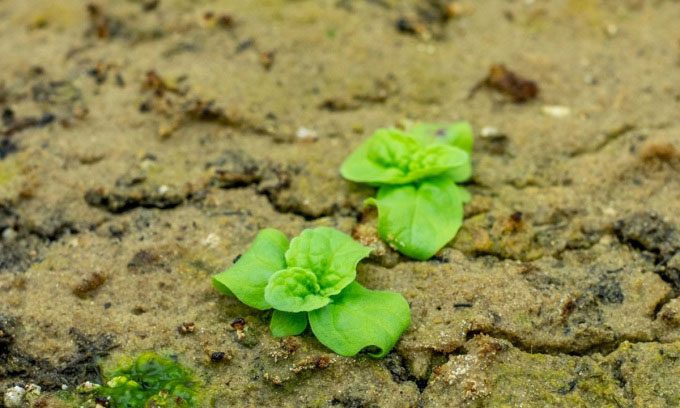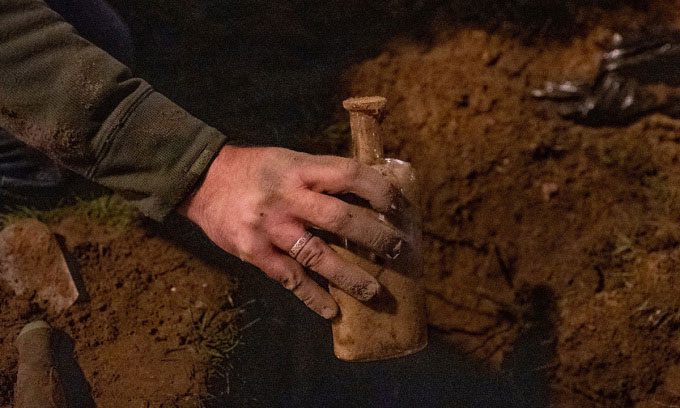The seed-filled glass bottles buried in 1879 led to the discovery of a unique hybrid plant in 2021.

A pair of Verbascum seeds successfully sprouted in 2021 despite being buried for over 140 years. (Photo: Derrick L. Turner/Michigan State University)
In 1879, botanist William Beal buried 20 glass bottles, each filled with moist sand and containing 50 seeds from 23 species of grass, at a secret location on the campus of Michigan State University (MSU). Beal’s goal was to study the longevity of these seeds by excavating the bottles after a few years to see if they could germinate and grow into plants. He hoped to understand how long dormant seeds could remain in agricultural fields before becoming a threat to farmers when plowed up.
Initially, Beal excavated one bottle every 5 years. However, by 1920, after the first 8 bottles were dug up and the seeds showed a high germination rate, his successors decided to extend the experiment by digging up a bottle every 10 years. By 1980, this interval increased to 20 years as seeds continued to sprout.

The location of Beal’s buried bottles remains a secret. (Photo: Derrick L. Turner/Michigan State University)
The exact location where Beal buried the bottles is still a secret, shared only among researchers to prevent any interference with the project. In 2021, the research team excavated the 16th bottle, and like before, some seeds successfully germinated.
“These seeds are like ‘zombie seeds,’ existing underground for an unbelievable length of time. They look dead but then suddenly sprout,” Live Science reported on November 8, quoting Marjorie Weber, a plant biology professor at MSU and a researcher on the project.
In the latest study published in the American Journal of Botany, the experts found that the 16th bottle contained a hybrid seed, combining genes from two species: Verbascum thapsus (which is part of the experiment) and Verbascum blattaria (which unexpectedly appeared).
The mixed seed of V. thapsus and V. blattaria was revealed through DNA analysis. The research team noted that this would astonish Beal since he was unaware of DNA at the time he buried the bottles. The researchers are still unclear about how the hybrid plant emerged, but it is likely that Beal mistook the hybrid seed for a normal V. thapsus seed while filling the bottles.
Seeds of Verbascum are among the few that can still germinate. The others stopped germinating after several decades. The research team hopes they will continue to germinate when the next bottle is excavated.
“It’s still a bit early to mark the calendar, but I’m looking forward to seeing if we can awaken more seeds in 2040,” said David Lowry, a plant biology professor at MSU and a project researcher.
With only 4 bottles remaining, the research team may need to increase the time between excavations to extend the experiment. “The Beal Experiment will ultimately come to an end when we dig up all the bottles. If seeds continue to sprout next time, we may need to consider extending the time between excavations to 30 years,” Lowry added.


















































